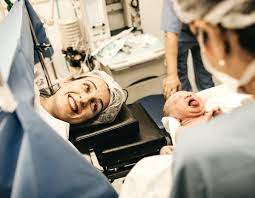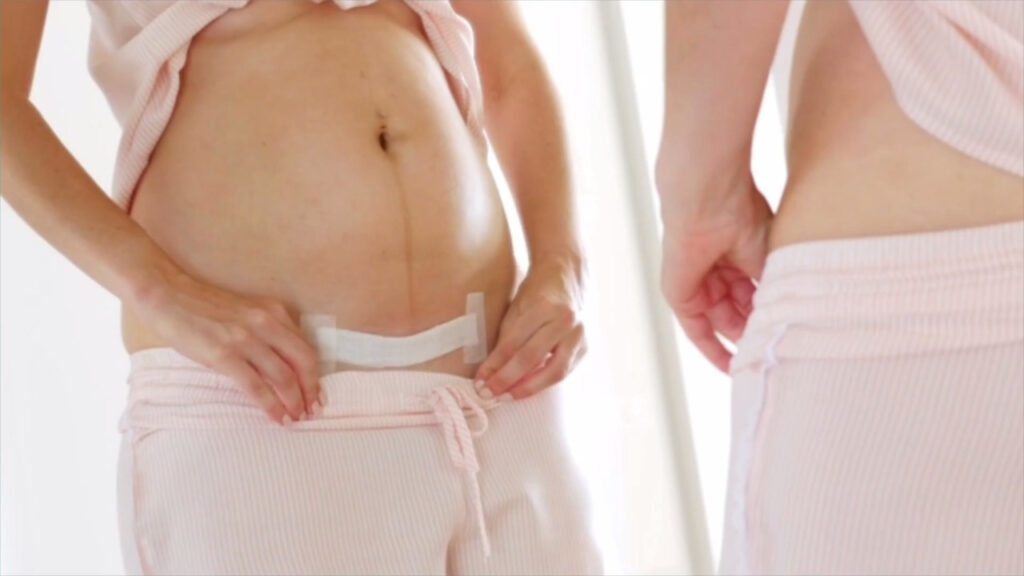
Caesarean sections (C-section) account for slightly less than 32 percent of U.S. births, according to data from the Centres for Disease Control and Prevention. While many are performed on women who’ve had previous C-sections, some are necessary if complications arise during a woman’s pregnancy or delivery.

A large number of C-sections are planned in advance. In addition to those women who had a C-section in a prior pregnancy and now desire a scheduled repeat one, we might recommend a planned C-section if the pregnancy involves:
● Some abnormalities in the baby or in mother
● Medical conditions in the mom that make labour dangerous
● Twins or more – the more babies you’re carrying, the more likely you’ll need a C-section because of the way they are positioned inside the uterus
● A breech baby, which is when the baby is positioned to be born buttocks or feet first, as opposed to the normal head-first position
Let’s discuss what to expect before and after a C-section.
5 tips to prepare for your C-section:

1. Restrict solid foods for ten hours before the C-section
This step will reduce the likelihood of vomiting or lung complications. Up until a few years ago, doctors also recommended against drinking any forms of liquid prior to surgery for the same reason. However, we recognize that that’s a long time to go without food or drink, particularly for something as physically and emotionally taxing as baby birth and recovery.
Patients today can drink clear liquids, including juice, prior to surgery. Make sure and understand the directions your doctor gives you regarding eating and drinking. If you don’t, your surgery – and your first look of the new baby – might be delayed!
2. Shower with a special soap
The night or morning before you come in for your C-section, we might ask you to shower or bathe with special soap that hospital will give you ahead of time (or tell you how to obtain at a drug store). The goal is to kill bacteria on the skin and reduce the risk of infection following your C-section.
3. Don’t shave your stomach or pubic area
You might think you’re being helpful, but shaving with razors creates small nicks in the skin, which can promote infection after delivery. If hair removal is necessary, your nurse will take care of it with clippers in the hospital on the day of your C-section.
4. Discuss with your doctor how incisions should be closed
We can use a variety of methods based on the type of skin incision, body characteristics, and a patient’s preferences. Typically, we use staples, stitches, or glue. If you’ve had a previous C-section, you might have questions or concerns about a specific closure method. Be sure to bring up this discussion with your doctor if he or she doesn’t mention it first – just so you know what to expect when the bandage comes off for the first time.
5. Discuss pain management
There are many possibilities for pain control following surgery. Options immediately following surgery include medications delivered through an epidural catheter or spinal, and IV medications delivered as scheduled doses or continuously through a pump.
You will probably be transitioned to medications by mouth as soon as you are eating. And expect for there to be an emphasis on how to manage pain using medications other than narcotic. It’s a good idea to discuss your options with your doctor before surgery so everyone is on the same page. Once you arrive at the hospital, your doctor will take more measures to prepare you for the C-section.
What to expect at the hospital
You’ve arrived at the hospital – it’s time to give birth to your baby. The care team will perform these three steps right before surgery:
1. Insert a Foley catheter
This is a thin, sterile tube used to drain your bladder, which reduces your risk of infection during delivery. The catheter also helps anaesthesiologists gauge how much urine your bladder is producing, which is important for monitoring excess blood loss. If you are having regional anaesthesia (a spinal or epidural) it will probably be placed after those procedures, so you shouldn’t feel anything.
2. Prevent blood clots
The care team will likely place a sequential compression device on your legs, which will massage them to promote adequate blood flow. The goal is to prevent blood from pooling in the calves and thereby help reduce the risk of potentially dangerous blood clots. The device might feel a little tight or uncomfortable at times, but resist the urge to disconnect it. These will stay on during and after surgery until you are up and moving around.
3. Possibly put you under general anaesthesia
Even if regional anaesthesia is planned, occasionally you might have to be put to sleep. At times the pain control isn’t adequate for major surgery or another complication might arise. If this happens, family members or friends who were supporting you in the operating room might be asked to leave. Some mothers request agentle C-section,which brings elements of vaginal delivery into the operating room by letting the mother watch the birth and hold her newborn right away.
Once your doctor determines you’re prepared, the surgery will begin. A C-section generally takes 30 to 40 minutes from start to finish. Repeat C-sections can take a little longer if scar tissue formed following your last surgery.
After your C-section
Many women are surprised to learn that we expect patients to be up and moving, eating, and using the restroom a few hours after a C-section. Women are encouraged to continue moving around out of bed to maintain a healthy blood flow from veins in your legs. Barring concerns such as fever, infection, or digestive problems, most women will go home within 72 hours of a C-section.
Among the major risk factors we monitor after delivery are high blood pressure and blood clots. It’s imperative that women alert their doctors right away if they feel pain, an unusual feeling, or simply like something isn’t right. Symptoms of preeclampsia, or high blood pressure, are:
● Headache
● Pain in the upper right quadrant of the abdomen
● Shortness of breath
● Swelling of the hands and face
● Visual changes
Blood clots can arise without warning and can be dangerous without quick diagnosis and treatment. Tennis phenom Serena Williams was in the news following her shocking brush with death from blood clots after her daughter was born. Tell-tale signs of blood clots after delivery include:
● Chest pain
● Coughing
● Red skin
● Shortness of breath
● Swelling of the legs
Anticipating your C-section experience can help reduce surprises and promote better healing. Be an active participant in your care and use these tips to ask your doctor what to expect from your C-section.
For more great articles about childhood development, baby names and baby care, bookmark kidspappy now!
